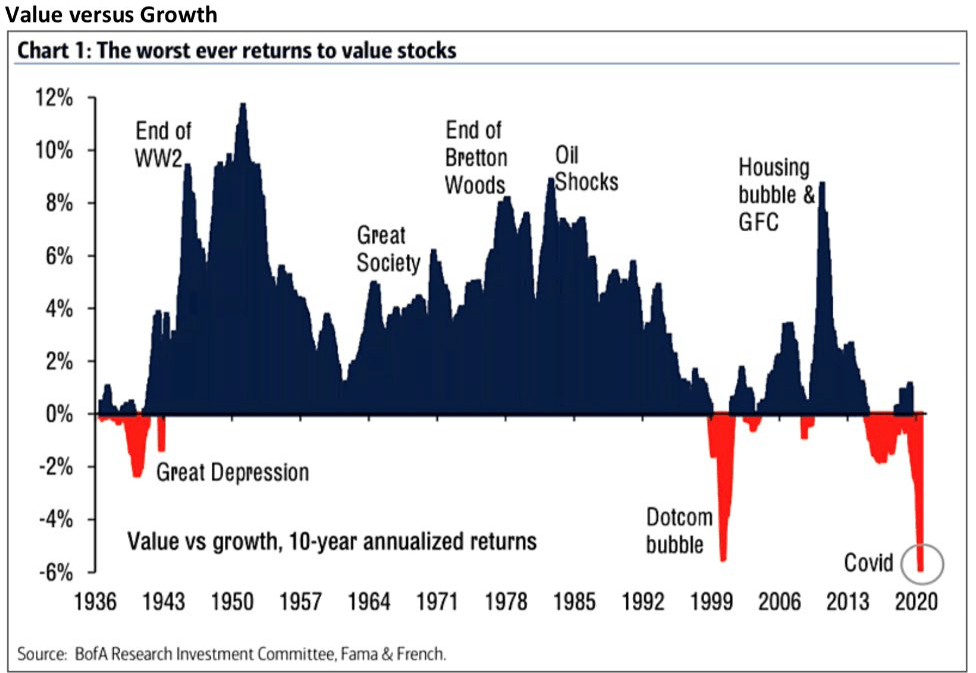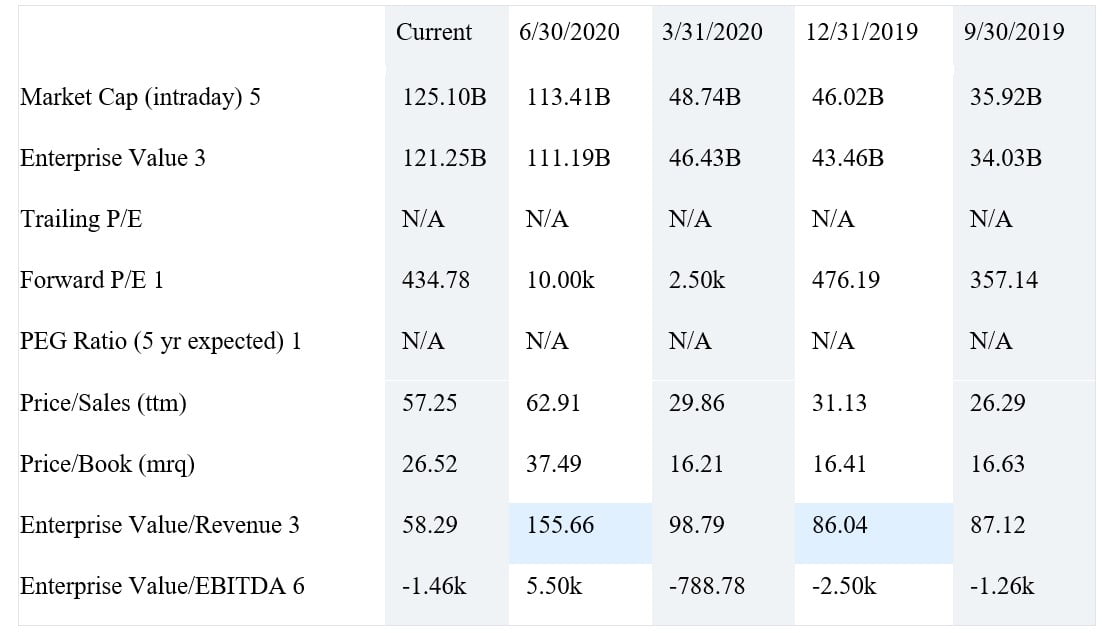3Not only so, but we also glory in our sufferings, because we know that suffering produces perseverance; 4perseverance, character; and character, hope. 5And hope does not put us to shame. (Romans 5:3-5)
Q3 2020 hedge fund letters, conferences and more
Joe Kennedy was getting his shoes shined in 1929 and the shoeshine boy was giving him stock tips. Think of how humiliating it might have been to Kennedy, who had dramatically reduced his common stock ownership. This upstart had been making money and couldn’t wait to pass along his wisdom to Mr. Kennedy. Joe quickly surmised that there was nobody left to buy stocks and established a huge short position in the stock market. The fortune he made by betting against stocks was part of the wealth which led his son, John F. Kennedy, to become President of the United States in 1960.
Positive Effect Of COVID-19 On Shopify
We were at our grandkid’s soccer game recently and we struck up a conversation with one of the parents. They worked for a successful fintech company (which we owned for a long time) and explained to us that they had invested in Shopify (SHOP) at around $140 per share. I looked it up over the weekend and was astounded by what the numbers told me. Here is what we found at Yahoo/Finance on SHOP:
We can share in Joe Kennedy’s humility, knowing that amateur investors like our new friend have been running circles around us. Simultaneously, growth stock professionals have this tailwind behind their back and are enjoying very substantial returns while our portfolios are struggling to get back to pre-COVID-19 levels. We are suffering and have been forced to persevere.
Shopify is eight times what she paid for the shares and has a stock market capitalization of around $126 billion. Shopify has two billion dollars of revenue in the last twelve months and the company is barely making a profit. The shares trade for an optimistic forward price-to-earnings (P/E) multiple of 434.78 and over 60 times sales.
Here is the description of the company:
Shopify Inc., a commerce company, provides a cloud-based multi-channel commerce platform for small and medium-sized businesses in Canada, the United States, the United Kingdom, Australia, and internationally. Its platform provides merchants with a single view of business and customers in various sales channels, including Web and mobile storefronts, physical retail locations, social media storefronts, and marketplaces; and enables to manage products and inventory, process orders and payments, fulfill and ship orders, build customer relationships, source products, leverage analytics and reporting, and access financing.
This all sounds very legitimate to us, but it also means that the COVID-19 quarantines have had a hugely positive effect on cloud-based software companies like Shopify and a ginormous effect on growth stock investors looking for the next big thing in technology.
Looking Back At eBay Stock
Therefore, we thought it would be good to look back at eBay (EBAY) stock in late 1999, when it was a darling in a financial euphoria environment. Oddly enough, that era was also built around excitement surrounding technology. This was the last major bifurcation in the stock market which humiliated value investors like us. In 2007-2009’s financial crisis, everyone got humiliated.
Here are the statistics for eBay from the opening paragraphs of the 1999 Annual Report:
A year in review 1999 was a historic year for eBay, filled with astonishing growth and rapid change. We began the year with 2.2 million users, a vibrant community about the size of Portland, Oregon and ended the year with over 10 million confirmed registered users—more than Michigan, the eighth largest state in the country. And that phenomenal growth reflected itself in every measure of our business: the number of items listed in 1999 totaled 129.6 million compared to 33.7 million in 1998. In the fourth quarter of 1999, every two tenths of a second, someone, somewhere was listing an item for sale on eBay — that translates to $113 dollars of gross merchandise sales per second. And, most impressive, gross merchandise sales grew an astounding 276 percent from $745 million in 1998 to $2.8 billion in 1999. During 1999, our users generated more economic activity on eBay than on any other consumer e-commerce site.
EBay peaked in March of 2000 at roughly $307.77, before adjusting to today via stock splits, and earned $0.09 per share that year. They are one of the biggest success stories of the dotcom bubble behind Amazon. Here is what the stock did the next ten years.
Ironically, we got heavily involved with eBay in 2008, when all the euphoria money was gone and came out of the bottom of the stock market in 2009 with a 4% position at around $11 per share. To the people who are chasing existing companies today, let’s review what we were getting in eBay common stock at $11 per share:
- $3 per share in net cash
- 30% of Skype
- 100% of PayPal
- 100% of StubHub
- 100% of five of the six largest online classified advertising businesses in the world
Ebay is currently trading close to $53 per share. On top of making nearly five times our money on eBay, we received one share of PayPal (PYPL) in 2015 for each share of eBay. After selling out of PYPL at an average cost of $91 per share, we had gained 6.65 times our money just from that alone.
Our experience tells us that we have hope from the indignity and humiliation of the present circumstances. First, you can expect the Shopify’s of the world to have extremely poor equity performance from these outlandish multiples of sales and profits. EBay is one of the success stories from the dotcom bubble, so it is unlikely that many will match them when the current episode dies.
Second, value hit rock bottom in 1999-2000 and had wildly good performance for eight years:
Last and most importantly, the greatest humiliation comes at the end. The stock market humiliation peaked in 1999 and in 2008. The alpha which came to folks like us was explosive as a result of both of those events, but more so coming off the eBay stock popularity in 1999-2000. We did well in 2009-2015, but value crushed the S&P 500 Index from March 10, 2000 to March 9, 2003 in a much more magnanimous way!
In conclusion, we won’t be shorting the stock market like Kennedy and it is unlikely any of our kids will run for President. However, we do think we are close to a comeuppance for investors in wildly popular tech stocks. This suffering, perseverance, character building and our hope are built from knowing history.
Warm regards,
William Smead
The information contained in this missive represents Smead Capital Management's opinions and should not be construed as personalized or individualized investment advice and are subject to change. Past performance is no guarantee of future results. Bill Smead, CIO wrote this article. It should not be assumed that investing in any securities mentioned above will or will not be profitable. Portfolio composition is subject to change at any time and references to specific securities, industries and sectors in this letter are not recommendations to purchase or sell any particular security. Current and future portfolio holdings are subject to risk. In preparing this document, SCM has relied upon and assumed, without independent verification, the accuracy and completeness of all information available from public sources. A list of all recommendations made by Smead Capital Management within the past twelve-month period is available upon request.
©2020 Smead Capital Management, Inc. All rights reserved.
This Missive and others are available at www.smeadcap.com.








